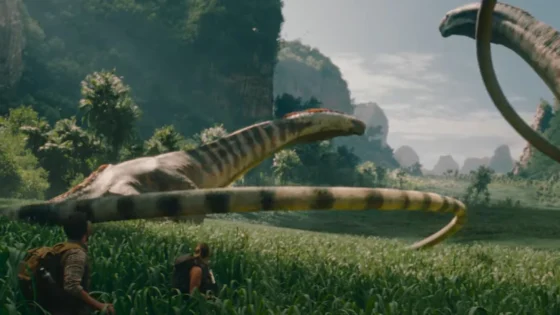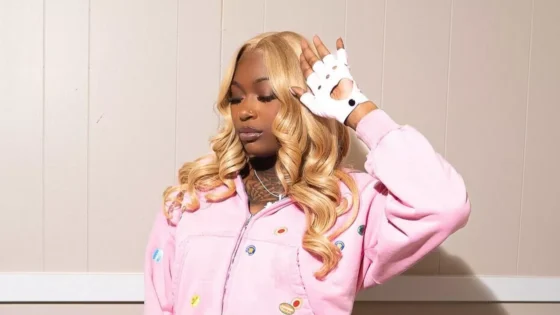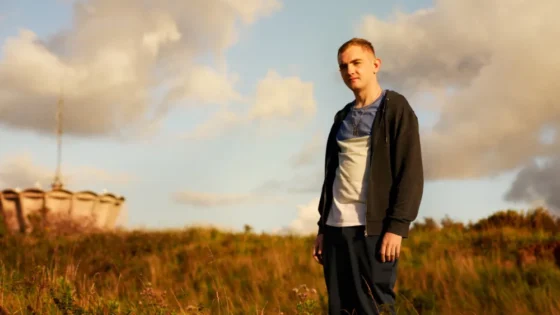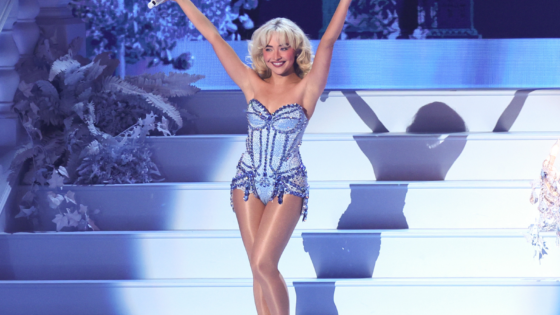One of the most hotly anticipated comics released in 2014 came from Image Comics and writer Scott Snyder (American Vampire). The horror series titled Wytches was met with such critical acclaim that it had been optioned by New Regency, with Plan B set to produce a feature film adaptation– and that was only after one issue hit the shelves. Unfortunately, the movie adaptation was never made (and likely never will be), but the limited series became one of the hottest comics of that year and in a way, sort of revolutionized the witch mythology for a new generation of horror fans.
With Wytches, Snyder breathed new life into the horror mythos. From the first two pages (which consists solely of the definition of the word “witch” written in a gothic font) to the fiery finish, Wytches sets an oppressive mood with its unconventional, confounding style. The original six issues are both stylish, and compelling and left readers both bewildered and curious about what would come next. Snyder and artist Jock created such a visceral experience that the combination of menacing Grand Guignol atmosphere, dazzling colours, gory violence and interesting set up went beyond the typical feel of a comic. Syder knows how to tell a good horror story in comics, and if there was ever any doubt, Wytches put that uncertainty to rest.
“Across the globe, century after century, men and women were burned, drowned, hanged, tortured, imprisoned, persecuted, and murdered for witchcraft. None of them were witches. They died protecting a terrible and hidden truth: witches, real witches, are out there. They are ancient, elusive, and deadly creatures that are rarely seen and even more rarely survived.“
What is Wytches about?
The story begins on August 1919, focusing on the Cray family. Tim, a young boy is walking through the woods and hears a woman crying out in pain. As he moves closer to investigate, he discovers his mother trapped inside a tree with blood dripping down her face. Her nose is cut off and she begs for help. The young boy picks up a giant rock and begins to smash her skull in. Pledged is pledged he tells her, and just like that, the opening flashback gives us a brief glimpse at the horror we can expect.
Fast forward to the present day and the Rooks have just moved to a new town in New Hampshire leaving behind a traumatic event from the past and hoping the move will put some distance between the family and what transpired. Charlie, the loving father, is a cartoonist who writes children’s stories with a vivid imagination. He’s passionate about his cartooning career but he never puts his work over his family. His wife Lucy has suffered an accident that’s left her in a wheelchair, but she stays supportive and focused on being positive. Their withdrawn, anxiety-ridden, troubled teenage daughter, Sailor, is the centerpiece of the series. Sailor faced an event that has left her emotionally scarred and so Charlie decided they needed a fresh start, but as we all know, some things you just can’t run from. If it wasn’t hard enough for Sailor to try to fit in at a new school, she must now deal with the growing lesion on her neck, a laceration which appears to have both physical and psychological effects on her wellbeing.
The prologue itself is a mystery; a story within a story, a nightmare in endlessly reflecting mirrors, and a place where time can stand still. As the Rooks family begins to unravel, the remaining five chapters offer more questions than answers.

Scott Snyder’s Horror
Scott Snyder, a writer who made his name in the horror genre before moving on to mainstream superhero work, plants many seeds for a disquieting little character study. What makes Wytches so harrowing is the sense of unequivocal dread that’s seeded in every panel – as if at any time something could jump out from the page. This blend of psychological horror, high school cruelty and teen angst is a relentless assault on the nerves and stays with you as would a childhood nightmare or a Grimm fairy tale. True to its brand, Wytches has all the trappings of the genre – but the issue also spends equal time fleshing out the characters.
The majority of Wytches focuses not on the uncanny, but rather on the emotional toll it has on the Rooks family. The presence of the supernatural is present throughout, but it is not the main focus. At its core, Wytches is a story about a father, a daughter, and their bond together, but it is also a story of apprehension and one which relies heavily on a sense of body horror. Supernatural themes can be daunting, but body horror, with its focus on degeneration, mutation, or mutilation of flesh, affects the reader on a gut level. That element alone compels us to sympathize with and root for Sailor and it doesn’t take long before this modern gothic fairy tale spins a tense and lyrical web of emotions. As the story unfolds we follow Sailor trying to cope with the aftermath of her traumatic attack and the horror of teenage life, all while her parents desperately attempt to search for answers.
One of the challenges with writing horror and fantasy is introducing not only the world itself but the background needed to set the stage for what’s to come. Snyder is a master at avoiding overly expository dialogue; not relying too heavily on exposition he finds clever ways to guide readers every step of the way. Wytches is what you’d call a page-turner and Snyder carefully allows the aftermath of that tragic event to brew while slowly opening the doors to new mysteries and the unknown. The first chapter, for example, expertly provides readers with a solid foundation and understanding of who this family is, leaving us with a cliffhanger that will have readers wanting more.

Jock and Matt Hollingsworth
Scott Snyder has a reputation for being one of the best writers of horror and he earns a ton of respect since he trusts his readers, and often the artists he collaborates with, to fill in the blanks. Jock is well known for his emotive, impressionist style. Even if you are not a fan of his superhero work, you’ll enjoy how his art lends itself well to horror. The ways in which he captures fear and panic in facial expressions is stunning. His landscapes are gorgeous, and the characters navigate the backdrops seamlessly throughout each panel. His sketchy layouts and framing allow for an immersive tone, especially in building towards the big reveal at the end. Colorist Matt Hollingsworth (who previously worked with Snyder on The Wake), is also vital in setting the mood, giving the book a dark, worn-out appearance. And finally, Clem Robins’ lettering in these pages is tremendously powerful, making a great first impression for anyone unfamiliar with his work.
Conclusion
Snyder established himself as an accomplished storyteller with his work on Batman, American Vampire, Severed, and the first half of The Wake, but Wytches might be the darkest tale he’s ever written. He seems to especially excel in the horror genre and in exploring human relationships set against supernatural or extraordinary events. It doesn’t take long for horrible things to start happening, and it doesn’t take long for readers to feel unsafe.
What Snyder, Jock and Matt Hollingsworth have created here is a stunning portrait of the mental and emotional breakdown of a young girl surrounded by the ugliness of the world, both supernatural and earthly. The stranger elements read like a fever dream, the rest resembles a Stephen King novel. Wytches is a textbook example of how to do horror right. From the twisted cold open to the glimpse of the slender figure in the woods, Wytches sets up enough mysteries and poses enough questions to keep readers invested. If you’re looking for a truly original horror story from a creative team who knows how to use the ingredients of the genre to their full potential, look no further. Wytches is that rarest of accomplishments in a field notorious for tedium and repetition.
– Ricky D

































